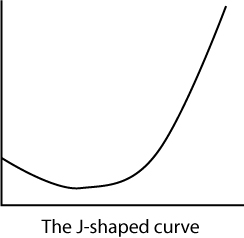 username@email.com
username@email.com
In this lesson we will review the discipline of ecology, looking specifically at the study of population ecology.
In the last lesson we discussed reasons for, and causes of, extinction; the formation new species; and the development of the theory of evolution.
Ecology is the science of our house; the word is derived from the Greek oikos (“house”) and logos (“to study”) so “ecology” literally means “to study the house.” In this case our house is Earth. Ecology focuses on the distribution and abundance of living organisms, how these are affected by interactions between the organisms and their environment, and the relationships of organisms with each other. The ecology of an organism includes the physical properties of its environment, local abiotic factors like geology and climate, and other organisms that share its habitat. The term ecology (oekologie) was originally conceived in 1866 by German biologist Ernst Haeckel who is considered to be one of the forefathers of the discipline.
Ecology is one of the broadest branches of biology because organisms can be studied at a myriad of different levels, from biomolecules like proteins and nucleic acids, to cells, to tissues, to organs, to organ systems, to individuals, and culminating with populations, communities, ecosystems, and ultimately to the biosphere. Most of ecology focuses on the last half of that list, and because of its concentration on these higher levels of organization and the interrelations between organisms and their environment, ecology draws heavily from many other branches of science. Most notable of these are geology, geography, meteorology, chemistry, and physics.
Ecology can also be subdivided into many sub-disciplines that include:
Ecology can also be studied at several levels: population, community, ecosystem, and all the way up to the biosphere. Moreover, there are particular branches that focus on specific aspects of ecology like tropical ecology, animal ecology, island ecology, pollination ecology, and others.
Considering the dynamics of entire populations of organisms points to the study of population ecology and its implications for humans and wildlife. Many of the ideas about natural selection are based on the thinking of Thomas Malthus who noticed that more offspring were produced by organisms than could actually survive. In particular, Malthus considered the capabilities of populations to overproduce. He suspected that a population could not grow unchecked indefinitely.
Today the study of population ecology examines individuals in populations and how they change over time. Birth rate and death rate are the most basic factors of population growth. The intrinsic rate of increase is measured as the birth rate minus the death rate. The capacity of organisms to reproduce under ideal conditions is called biotic potential. The age an organism reaches sexual maturity, the frequency of reproductive opportunities, and the offspring produced are factors that affect biotic potential.
Humans, elephants, whales, gorillas, and many other large species have low biotic potential. These species take several years to reach sexual maturity. Long gestation periods are needed. Low numbers of offspring are produced as the result. Parental care requires a considerable amount of energy. Offspring often remain under the care of the parents for many years. Animals of low biotic species typically live a long time.
On the other hand, most insects, amphibians, rodents, marine invertebrates, bacteria, and parasites are examples of species with high biotic potential. High biotic potential is distinguished by a short time to reach sexual maturity, and large numbers of offspring. Many offspring are needed because not all will live to reproduce. In these cases, little to no parental investment is spent caring for offspring after hatching. At or shortly after birth, offspring need to be ready to provide for their own needs. High biotic species generally have short generation times and, consequently, higher mutation rates than species with lower biotic potentials.
Under ideal conditions a population may exhibit exponential growth rates, or growth at its biotic potential. Exponential growth is a mathematical expression of increasing values. For example, an arithmetic progress would look like 2, 4, 6, 8, 10, 12 while an exponential progression is 2, 4, 8, 16, 32. Each time the population grows the number doubles. On a graph, exponential growth is expressed as a J-curve.

Without limiting factors a population of organisms could double rapidly. However, in the natural world, this is rare. There are many factors that affect the growth rate of a population. Predators, disease, availability of food, water, shelter or space, and natural disasters are all factors that limit a population’s success. These environmental factors help define the carrying capacity (K) of a habitat. The carrying capacity is the population size an environment or place is able to support indefinitely.

The carrying capacity is different for every environment and its resident organisms. In nature, carrying capacities tend to stabilize over time. Increased death rates result from too many individuals. Too few individuals can lead to increasing population sizes. The carrying capacity of a habitat can limit the population’s potential. If a habitat’s natural resources become limited by drought conditions, for example, population growth also becomes limited. In a graph including the limiting factors of carrying capacity, the population curve would be reflected as an S. Over time the influence of a habitat’s carrying capacity would act on the population size.